Ever wondered what insect might have the most painful sting? You’re probably thinking there isn’t a definitive answer. Some people might think a hornet has a more painful sting than a harvester ant, but how would they know if they hadn’t been stung by both of them? So there isn’t really a way of ranking the pain of all the various insect stings without getting stung by all of them, and no one is going to do that, right?
Enter Dr Justin O Schmidt, a retired entomologist from Arizona. Over the years he has sampled and logged the stings from around 150 species of hymenoptera (wasps, bees, hornets and ants). He then used this information to create the definitive scale and ranking system for insect sting pain – the Schmidt Pain Index.
The index rates the intensity of pain caused by a sting from zero to four:
0. No pain – Oh, was that it?
1. Pain so slight as to constitute no real deterrent – Hmmmm. Interesting.
2. Painful – Ouch!
3. Sharply and seriously painful – Yeeeoooowww! OMG! If I poke myself in the eye will it make it hurt less.
4. Traumatically painful – Oh dear God please let it stop. I promise I’ll change….
Now, whilst we’d obviously liked to have seen the scale go up to, say seven, this is still pretty impressive stuff. To think, the guy actually actively encouraged these things to attack him. If you are not familiar with the appearance of the Tarantula hawk then scroll down and take a look. Yep, this thing fights giant spiders and is the size of an eagle.
I’m now trying to imagine him sitting there annoying this death on wings into sticking its harpoon sized stinger into him. At which point, instead of dropping to the floor, crying “Momma”, he makes mental notes, savouring the pain for science!
So what possessed this apparent madman to subject himself to all this wanton pain? Well, it was all in the name of science. The initial findings were released as part of the 1983 paper; ‘Hemolytic activities of stinging insect venoms‘, and the scale finalised in ‘Hymenoptera venoms: striving toward the ultimate defense against vertebrates’ published in 1990.
Basically Schmidt was interested in the relationship between the pain caused by a sting and the deterrent benefit to the insect. It was noted that these stings were far more painful than they were toxic. What was needed was an absolute scale for comparing different species.
Below are a series examples of stings across the range of the scale starting with the least painful:
10. Sweat bee
Light, ephemeral, almost fruity. A tiny spark has singed a single hair on your arm.
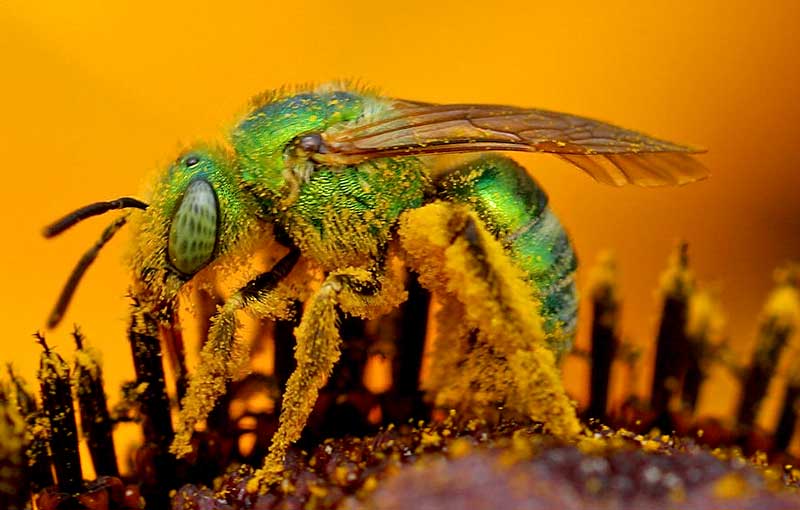
The sweat bees (Lipotriches sp.) are a group of small bees which are attracted to the salt in human sweat. Whilst, like other bees they feed on flower nectar, they also like to top up on the salt and minerals found in sweat (and I thought they were just friendly!) They are common throughout the world and come in a variety of colors, including metallic green as pictured.
Being attracted to sweat they can be somewhat of a nuisance and they will sting if squashed against the skin. Whilst this can trigger an allergic reaction it is, as you can see, a fairly mild sensation.
9. Fire ant
Sharp, sudden, mildly alarming. Like walking across a shag carpet & reaching for the light switch.

There are around 300 species of fire ants (Solenopsis sp.) around the world and many species are referred to as red ants. These are small ants, measuring between 2-6mm but they make up for this with an unpleasant sting. This is where the ‘fire’ part of the name comes from.
The ants sting by gripping with their powerful jaws and injecting their venom with a dedicated sting. One sting is mildly painful, resulting in a raised red bump. However, most cases involve multiple bites causing significant pain and an increased possibility of infection.
8. Bullhorn acacia ant
A rare, piercing, elevated sort of pain. Someone has fired a staple into your cheek.
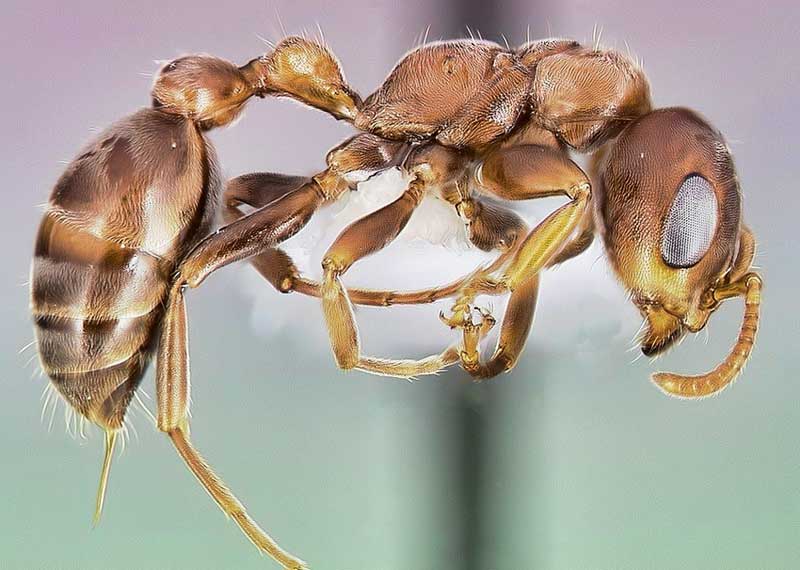
The Central American bullhorn acacia ant (Pseudomyrmex ferruginea) is wonderful example of a symbiotic relationship between tree and ant. The ants protect the tree from other insects and in return get a place to live and source of food. They live inside the large thorns that grow on the bullhorn acacia tree.
The acacia ant is highly aggressive and defends the tree by attacking animals of all sizes; from other insects up to foraging goats. Whilst the ant itself is small their sting is pretty potent causing a prolonged burning and throbbing sensation.
7. Bald-faced hornet
Rich, hearty, slightly crunchy. Similar to getting your hand mashed in a revolving door.
The name hornet alone fills many with fear, but this fellow is actually not a real hornet but a monochrome yellowjacket or wasp. The bald-face hornet (Dolichovespula maculata) is found throughout North America where it forms large ‘paper’ nests containing up to 700 individuals. It is pretty big by yellowjacket standards and also seems quite angry.
These wasps become particularly bothersome in late summer when they are keen to invite themselves along to picnics. The sting is pretty painful and they are not shy about using it, repeatedly.
6. Yellowjacket
Hot and smoky, almost irreverent. Imagine W. C. Fields extinguishing a cigar on your tongue.
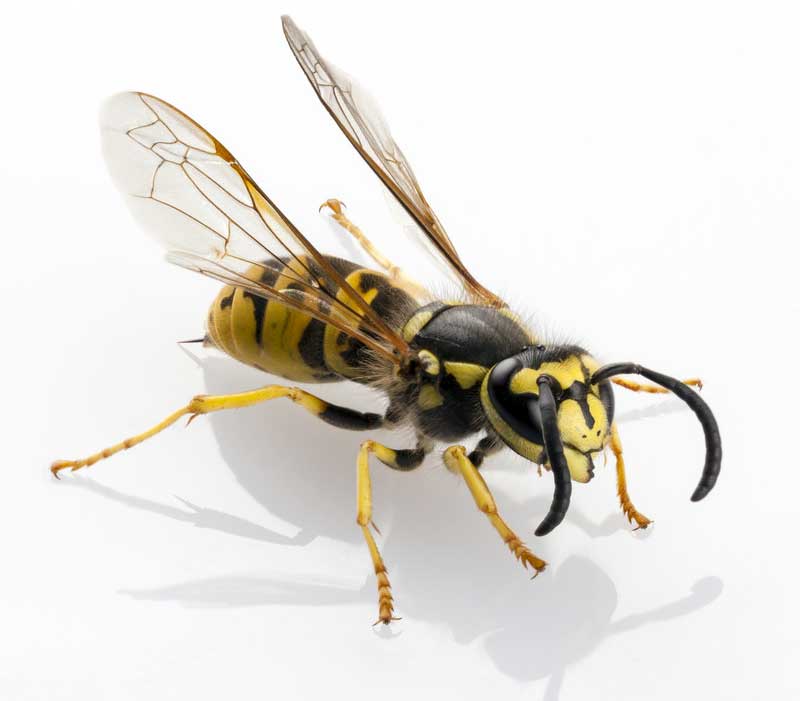
Known as the yellowjacket in America and the wasp in other countries Vespula sp. are universally regarded as a pain in the ass – literally in my own case. The paper nests can often be found in attics or even underground in old rabbit holes and can contain many thousands of individuals.
As with other wasps yellowjackets are able to use their sting multiple times. Bees on the other hand die after using theirs. This means that whilst both groups will happily sting to defend their nests, wasps will also sting in defense – or just for the fun of it if you ask me.
5. Honey bee
Like a match head that flips off and burns on your skin.
Just pipping the run of the mill wasps is the honey bee (Apis mellifera). Found throughout the world this lovely little bundle of fluff is responsible for producing, you guessed it, honey. How the honey is made is a different matter; it is basically nectar eaten and regurgitated over and over until it’s good to go. In case you didn’t get that, what I’m saying is honey is bee vomit! That’s fine for bees to use as a food store but I’m now wondering if I’ll enjoy honey quite as much from now on.
Anyway, on to sting. Whilst generally pretty cool about stinging, bees are highly defensive about their nests and their honey. Unfortunately for both sides, when they do sting they leave behind the barbed sting, along with a proportion of their insides, including the still pumping venom sac. This is an unpleasant death for the bee, but also pretty painful for the recipient of the sting.
The notorious Africanized “killer” bee (Apis mellifera scutellata) is a sub-species of honey bee. Whilst they produce more honey they are highly aggressive and have caused fatalities when swarming. Reports indicate they will pursue a victim for over a mile and can remain angry for days after.
4. Red harvester ant
Bold and unrelenting. Somebody is using a drill to excavate your ingrown toenail.
And so, up to the next level of pain… The Red Harvester Ant (Pogonomyrmex barbatus) is native to the southern US. It is a large ant with powerful jaws which it uses for cracking seeds open. Their nests are easy to spot as there will be a hole in a small mound surrounded by nothingness – these ants are reknown for destroying large areas of vegetation around their nests.
The painful sting is way out of proportion to the size of the creature. It is said that the venom is as potent as the most poisonous snakes in the world. Fortunately the dose delivered is so small that it would take about 1,000 bites to kill you that way. Given the intense pain from a single sting, no one is going to hang around that long!
What is truly bizarre about the harvester ant is that these are the ants favoured in toy ant farms. Apparently its because they don’t have the sticky stuff on their feet to climb out and they dig nice tunnels. If one did escape though it could quickly end any budding interest in ants.
3. Paper wasp
Caustic & burning. Distinctly bitter aftertaste. Like spilling a beaker of hydrochloric acid on a paper cut.

The paper wasp (Polistes dominula) belongs to a different branch of the wasp family. Found throughout Europe, this species has also been introduced to North America where it has had little trouble displacing local wasp species. Nests can often be found in the eaves of roofs or in attics and are characterised by their small open cells containing larvae. The paper wasp is generally larger than other wasp species and has a sting to match.
That said, it is not quite as aggressive as some wasps. However, once in attack mode it will deliver repeated, agonising stings.
2. Tarantula Hawk
Blinding, fierce, shockingly electric. A running hair drier has been dropped into your bubble bath.
The sting of the Tarantula Hawk (or Pepsis wasp) is major league. This one is only for real connoisseurs of pain. The creature itself is the stuff of nightmares; at 5 cm (2 in) long this is one of the largest wasps. The sting alone can be 7mm (1/3 in) long – that’s a flying syringe! But that is nothing compared to how this beast earns its name.
The Tarantula Hawk can often be seen perched on flowers, sipping nectar, for that is what it eats. However, once in a while the female wasp feels the need for meat. Spider meat. And not just any spider. She’s looking for the biggest, hairiest spider around.
Once she has located her hand-sized spider victim she does battle. Grabbing the spider she will stick it with her sting, which paralyses the spider, and drag it back to specially prepared nest. Here she lays a single egg within the spiders abdomen.
When the egg hatches some days later it gorges itself on the still living spider’s insides. The larva will save the spider’s vital organs until last so keeping it alive and fresh. Who needs fridges?!
The harpoon-like sting the Tarantula Hawk comes armed with is not just effective on spiders. It is infeasibly painful. There is a new level of pain – debilitating agony which can render a person incapable of doing anything for several minutes. In the words of Dr Schmidt himself:
“…immediate, excruciating pain that simply shuts down one’s ability to do anything, except, perhaps, scream. Mental discipline simply does not work in these situations.”
1. Bullet ant
Pure, intense, brilliant pain. Like fire-walking over flaming charcoal with a 3-inch rusty nail in your heel.
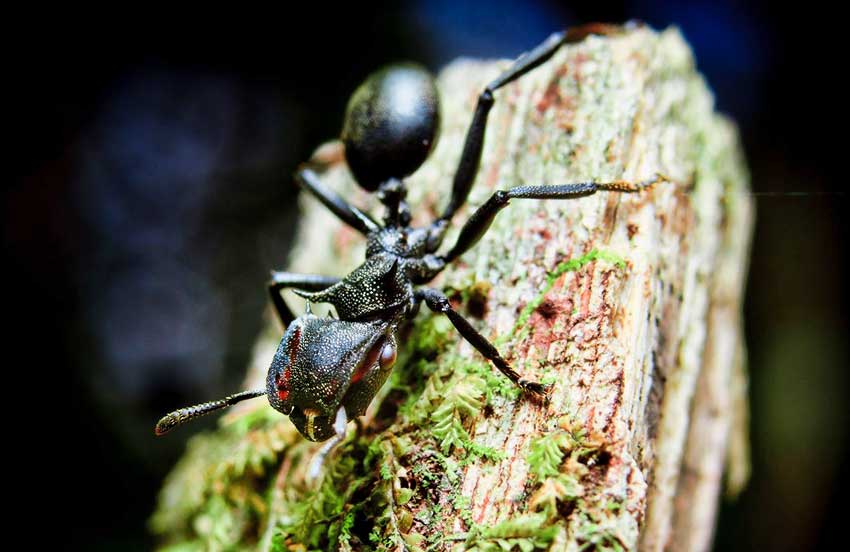
After the Tarantula Hawk it is pretty difficult to imagine anything could possibly be worse. I mean, that scores 4 out of 4 so where do we go from here? 4+ is the answer. The very limits of human pain.
And what could be responsible for this level of pain? A hornet the size of an eagle? Well, no. An ant from the forests of South and Central America.
Paraponera clavata goes by several names; the lesser giant hunting ant, the conga ant, 24 hour ant, but most know of it as the bullet ant. The name actually comes from reports that the sting hurts as much as being shot!
As far as ants go the bullet ant is quite big and powerfully built, but nothing can hint at the pain proffered by that sting. I have just watched a video of a grown man being reduced to tears after being stung by bullet ants. The pain has been described as “waves of burning, throbbing, all-consuming pain that continues unabated for up to 24 hours“, which kind of makes you wonder why anyone would volunteer to be stung by one, or more of these critters.
Volunteer?! Surely not?
Well, yes.
In the initiation rites of the Satere-Mawe people of Brazil bullet ants are placed in gloves which must be worn for 10 minutes. And it isn’t just a one off. To become a warrior a boy must do this many times.
Schmidt’s is quoted as saying “WOOH!” during his experience with bullet ants, at which point he sat down to “savor the experience”. After being stung some more he was a shaking wreck and decided to head to the nearest tavern to try and drink his way through the pain. 12 hours later the pain was still coming in waves. But he lived to write it all up.
And there we have it. A brief delve into the Schmidt Pain Index, an index of pain that goes up to eleven, or 4+
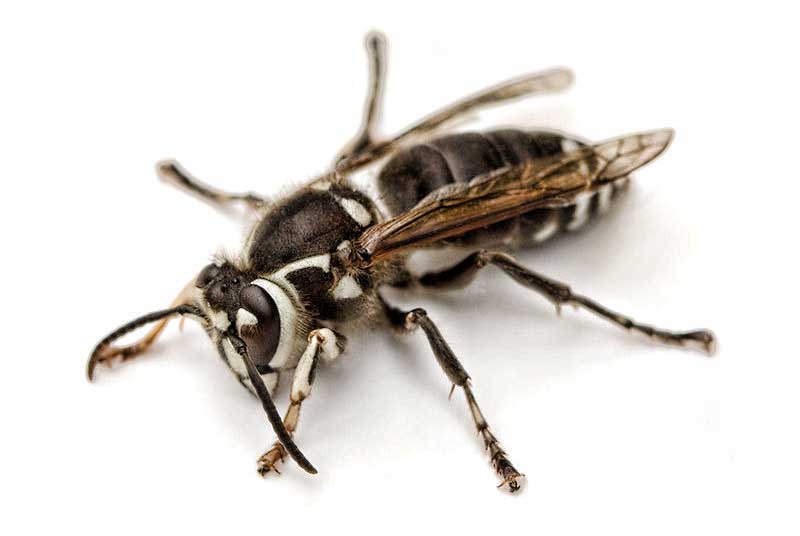

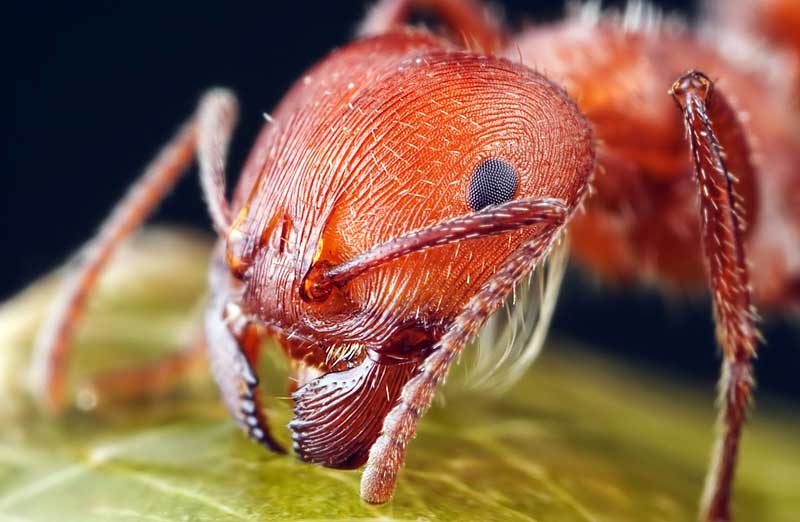

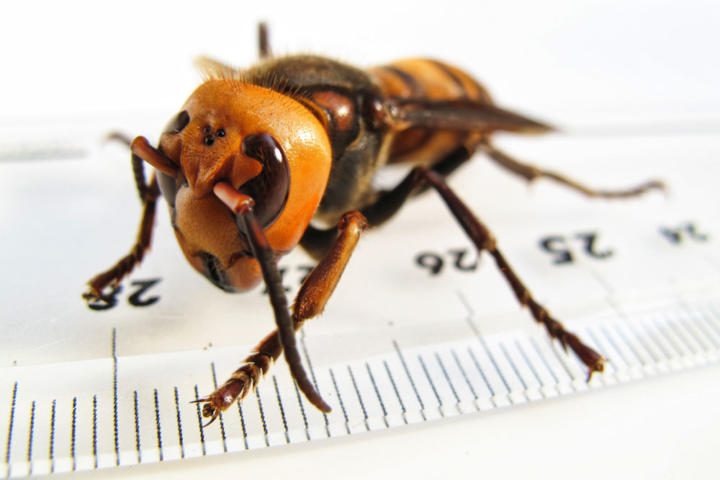

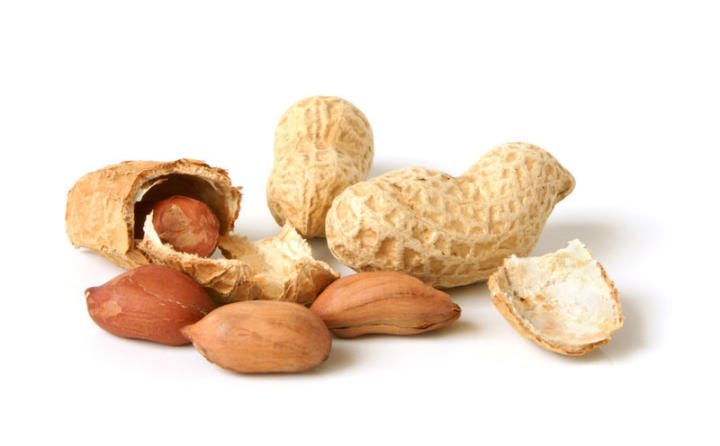
I’m more surprised someone sat down and documented these all based on personal testing. He cataloged the painfulness of stings from 78 Insects. the guys a legend
The Executioner Wasp has the most painful sting in the world.
The worst bite I experienced was that of the Centipede. When I was 12 I was trying to catch one to have as a pet and was herding it into a glass jar. Before I knew what hit me it flicked it’s head around and tagged me on the wrist above my right thumb. I was in so much pain all I could do was lie on the ground and scream. Luckily someone heard the screaming and called an ambulance and I was put on a morphine drip for over 24 hours. I had broken bones that were a walk in the park compared to a Centipede bite.
These are nothing! Sounds to me like you might enjoy pain at its max, if your a dude, well, sorry you can search the ends of the earth high to low in and out top to bottom but until you have experienced childbirth YOU DONT KNOW PAIN!!! This would surpass your 4+ and take you straight to a 7. I’m not talkin epidurals here, I’m talkin laboring, intensely for 10, 12, 15 sometimes 20 hours until your are fully dilated and it doesn’t stop there! No! Then your told to push so hard it feels like your eyes are gonna pop out! now THATS pain.
I hear the stonefish is the most painful (https://www.planetdeadly.com/animals/dangerous-sea-creatures). Somebody here saying it is worse than childbirth: https://www.sunshinecoastdaily.com.au/news/stonefish-victim-pain-worse-than-childbirth/3311011/
We’re talking about the pain index from a sting, why would you have to spoil it with childbirth pain nonsense.
As a matter of fact, women do that for centuries and I don’t think that it is something to be proud of.
It’s nothing special, tell Bill Burr about that and he will screw you to nothingness, Kim.
It’s a proven fact (by a handful of controlled tests now) that a hard kick to the testicles is more painful than childbirth so please honey. get over your self
Really Nick I watched my wife give birth and I watched the blood vessels and both of her eyes pop and blood go shooting through her eyes yeah she’s screaming and writhing in pain but I’ve been kicked in the crotch few times can never really remember being in quite that much pain and then when the doctor takes a pair of scissors and then reaches down there and slices you open to let more room for a baby’s head to come out and you really think that a good kick to the crotch is more painful you may be an idiot
Childbirth is much more painful.
You petty guys need to get over yourselves. Yes, I’m a guy, but once you pass kidney stones the size of cherrys out of your urethra, you have nothing to brag about.
I went thru 38 hours and wasn’t even dilated!! Then of course I had to have a section on top of that. Want pain? REAL PAIN?? Have labor. Then come see us about pain
You are one tough girl!
Another one you do NOT want to be stung by that is a newcomer to Canada is the Masked Hunter. It has a stabbing proboscis and is very aggressive. They young are sticky and covery themselves in dust and drywall dust. They adults are flat, black, just shy of an inch and look very much like Box Elders but without the red and are longer. They have the curved, stabbing beak underneath and will jump on you and stab. I got it once and screamed out loud and kept screaming, threw the watering can I was using and grabbed the bug off my foot. Then staggered into the house, sobbing. Watch out for these things. They are not poisonous but you don’t want to be bitten, no have your children or animals suffer. Kill them when you see them. I love all beings, except these.
whats the survival rate from being stung by a bullet ant?
Hey bullet ant is compared nothing to the Executioner wasp and the japaneas giant hornet
I say that the strongest ones are bullet ants and killer bees because killer bees swarm you and you have a chance of being killed by the loads of stings you get from the swarm of the killer bees. the bullet ant last for 300 mins witch is a long time
I’d like to recommend putting the gympie gympie plant somewhere on the Planet Deadly website. But I don’t know where it’d fit, because it’s a stinging plant. It’s an Australian relative of the common stinging nettle, and its pain is so intense that 1) horses that have been stung have thrown themselves off cliffs, and 2) an Australian officer who used a leaf as toilet paper then decided to shoot himself in the head to escape the pain.
Planet Deadly is a wonderful website for all sorts of deadly weirdness. And my favorite “deadly weirdness” is definitely the gympie gympie.
They forgot to add that harvester ant stings are excruciating for the 1st 1/2 hour, hurt like hell for the next 3 hours, and can still be felt 5 hours later. Having been stung by 1/2 the insects on the list, that was by far the worst for me. Still haven’t tried the bullet ant or tantula hawk. Talked to a TH victim and it sounded horrible. However, he said it only lasted 15 minutes. If given a choice, I might opt for that over hours of HA pain.
One insect I have seen in recent years is the Cicada Killer Wasp. Scary and quite terrifying, it measures up to an inch and a half long with a pointy abdomen. It has black and yellow-white bands, very similar to a yellow jacket, and it’s stinger averages between a quarter and a third of an inch long. Even though I have never been stung by one before, from the looks of it, I’d estimate that it’s sting would probably have the following description; “Blinding, ripping, inconceiveably intense pain. Like getting blasted in the lower back with an AK-47.” Basically, to simplify it, the kind of pain LAPD officer James Zboravan was in when he got hit by AK-47 fire during the 1997 North Hollywood shootout.
I grew up in New Mexico and I’ve been stung by one of these before as a teenager. I got too close to a bush while mowing the lawn, where one was sitting on a leaf. It was like being stung by a yellow jacket, but the pain dissipated pretty quickly. Fortunately, cicada killers are not real aggressive. But they do have an unnerving habit of moving their bodies to follow the movements of people and animals. They like to watch you.
I got stung by the paper wasp on the back of the kneecap, it hurt horribly. Nothing like what it would feel like when stung by bullet ant.
Back of the kneecap eh? That’s a neat trick